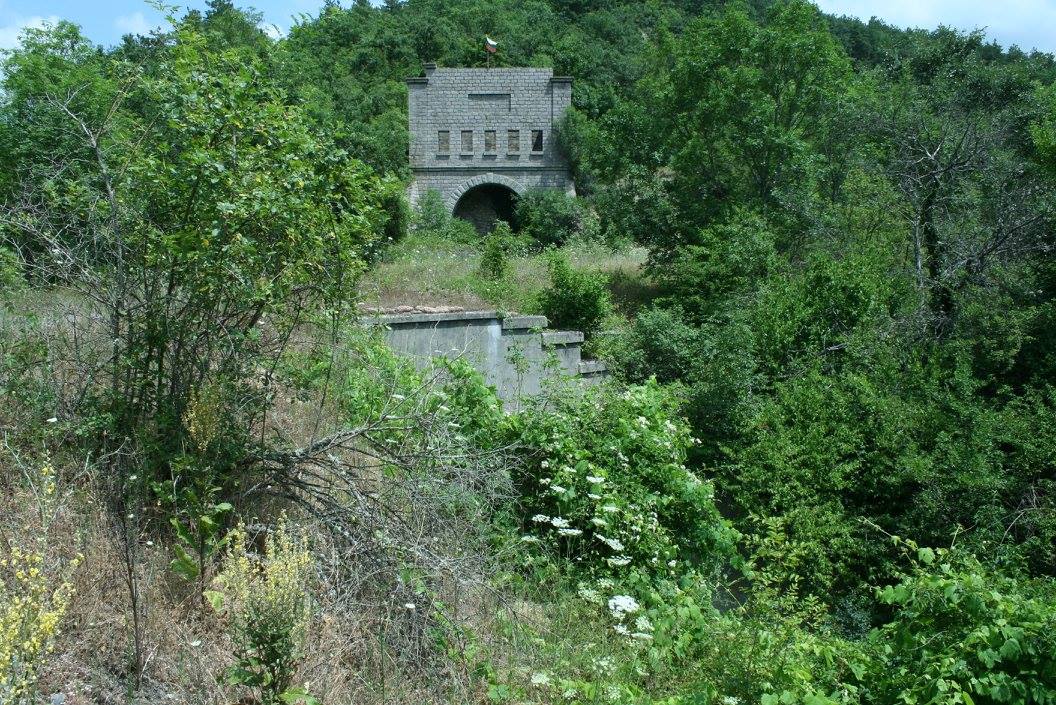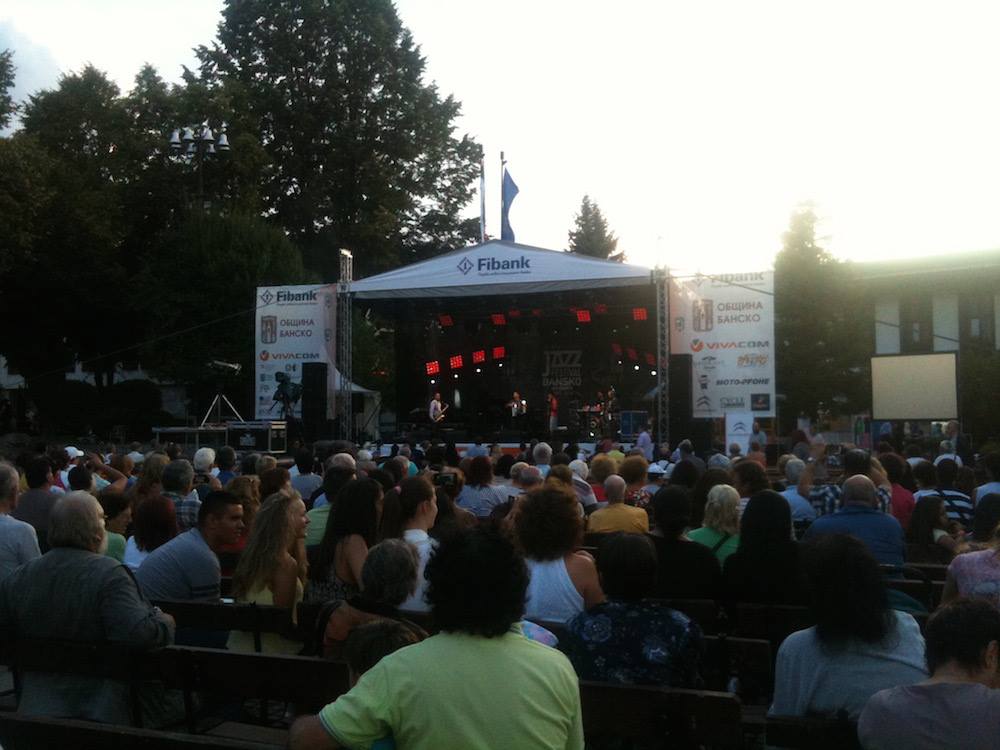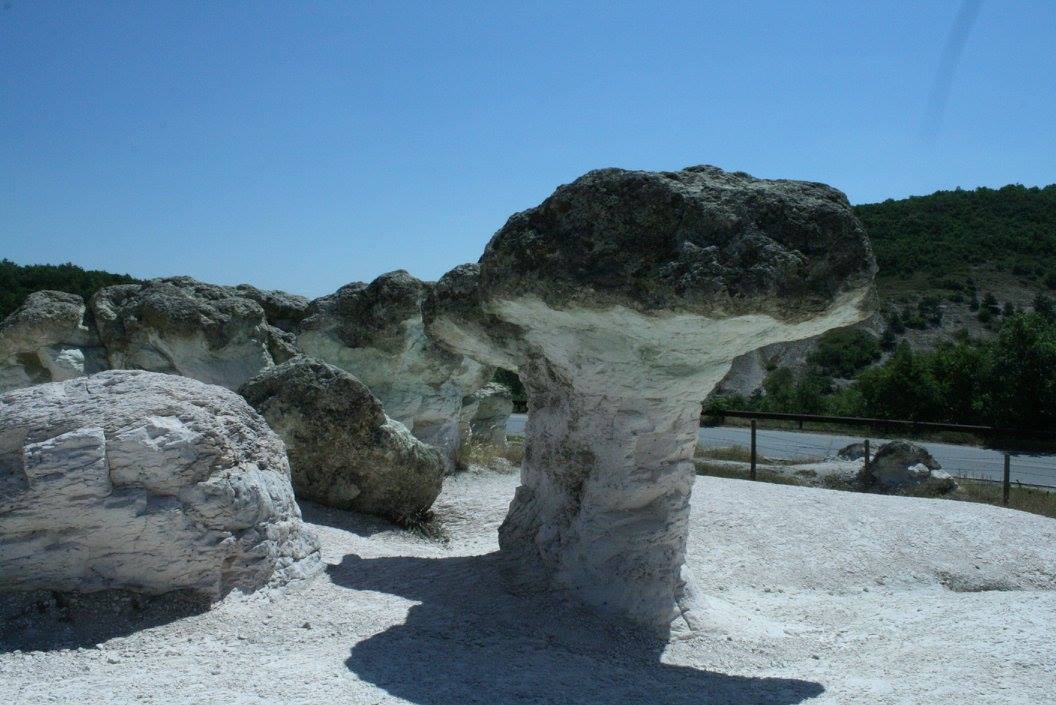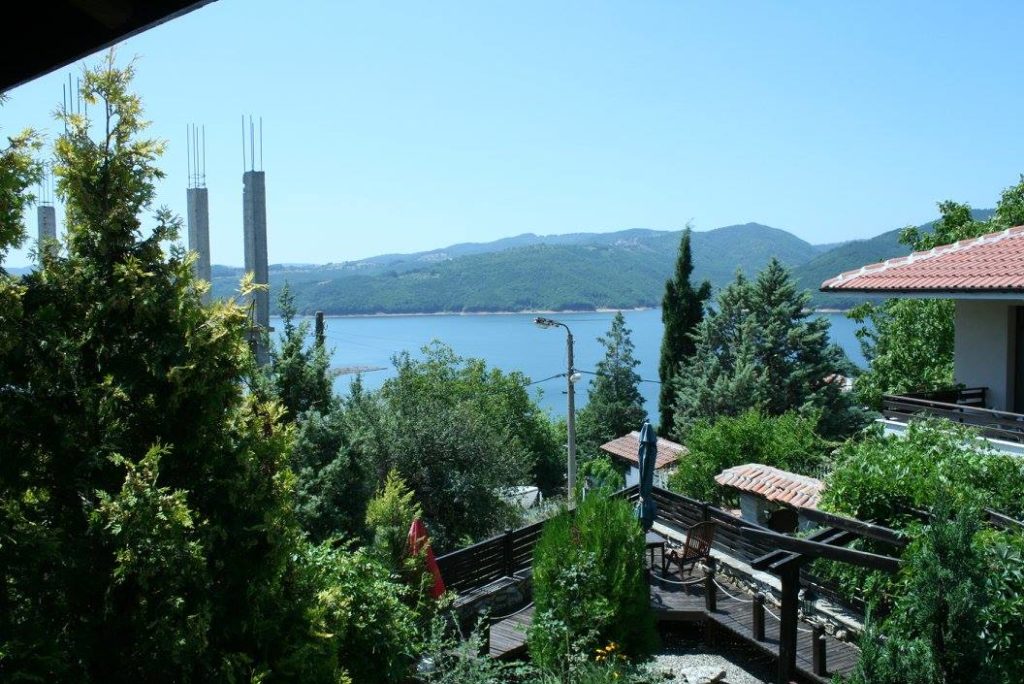
After leaving the nature reserve at Madzharovo, we journeyed back towards Perperikon, turning south at the village of Chiflik and heading to the large town of Kardzahli, situated close to the Greek border.
The town itself was fairly drab, although we did not have much time to really explore it and simply drove through and out towards the reservoir and. We had booked a room at the Triton Zairean hotel, in the small “resort” of Glavatartsi.
On arrival we were very pleasantly surprised to find we were given a whole holiday cottage with its own little garden. We took a walk down to the edge of the lake and have to say, it is certainly not a place we were tempted to swim in, despite the temperatures being close to forty degrees.
The water was green and slimey and the edge was just mud flats.
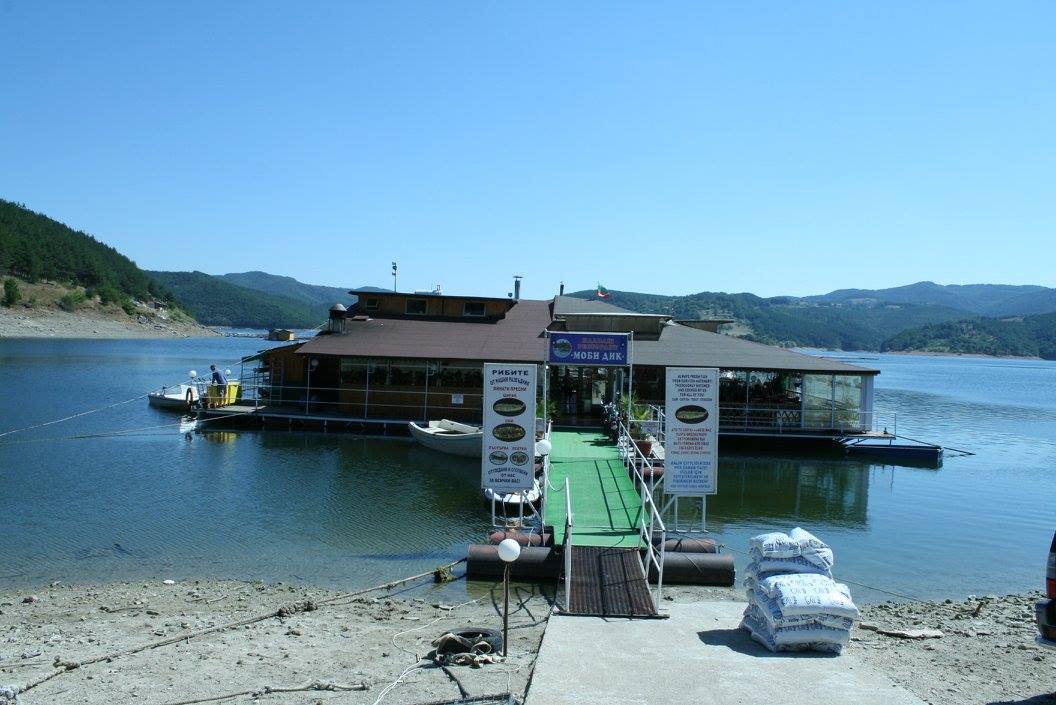
We had heard about the floating fish restaurants and more by luck than good planning, we happened to find our way to one of these – the Mobi Dick.
The place was clearly very popular. The restaurant itself is built on a floating platform, accessed by a gang-plank from the shore. Behind the restaurant were the fish nurseries and as you sat and ate your fish meal, you could watch the fish jumping in the pools behind.
Following lunch we headed out to find the Thracian sanctuary near the village of Tatul, passed Momchilgrad. It is an ancient religious centre carved out of the rock, with a kind of pyramid structure on the top, carved out of the rocky hill top and containing two sarcophaguses, an alter and a well, all carved out of the rock.
It is believed to first have been used in the 13th to 11th century B.C for special sacred rituals and the tombs were the final resting place of an influential Thracian leader with links to the Orpheus cult.
It was extremely rare to bury leaders above ground in such rock tombs and only the two mythological characters of Orpheus and Rhesus (a Thracian King who served in the Trojan wars) were apparently buried this way.
Many of the artefacts found resemble those found near Kazanlak, in the Valley of the Thracian Tombs.
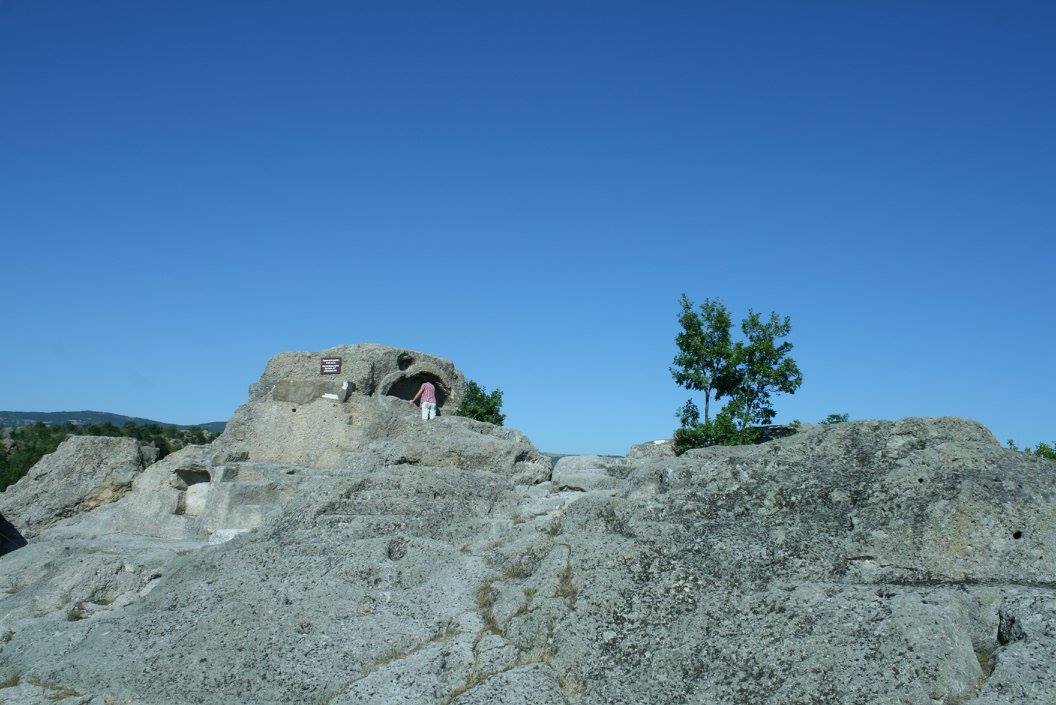
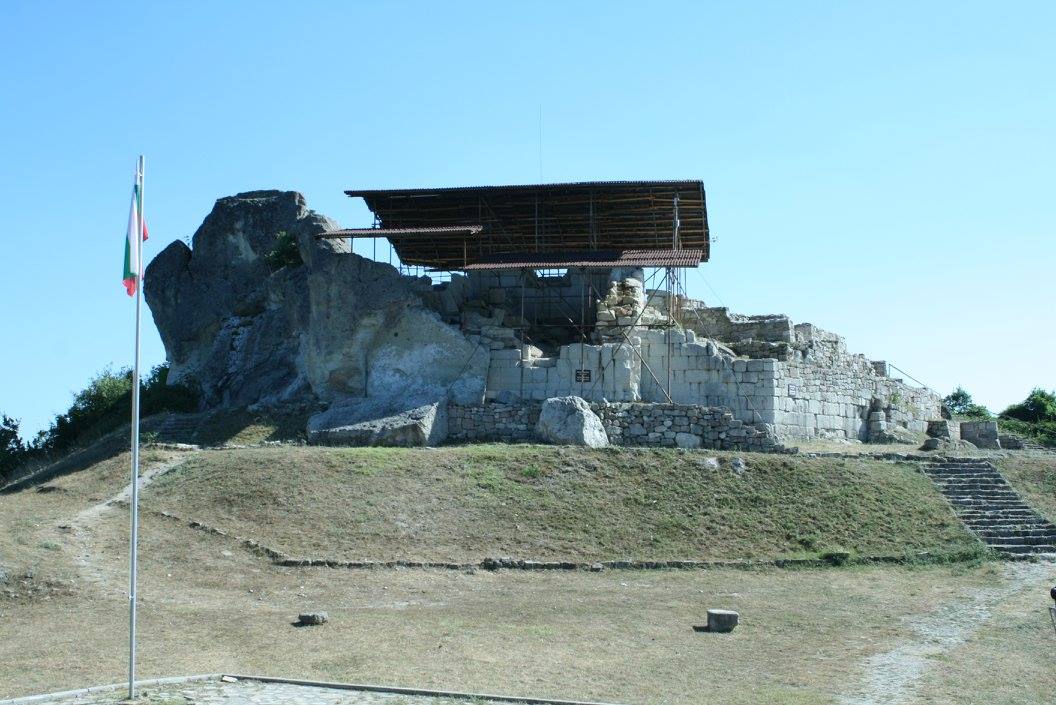
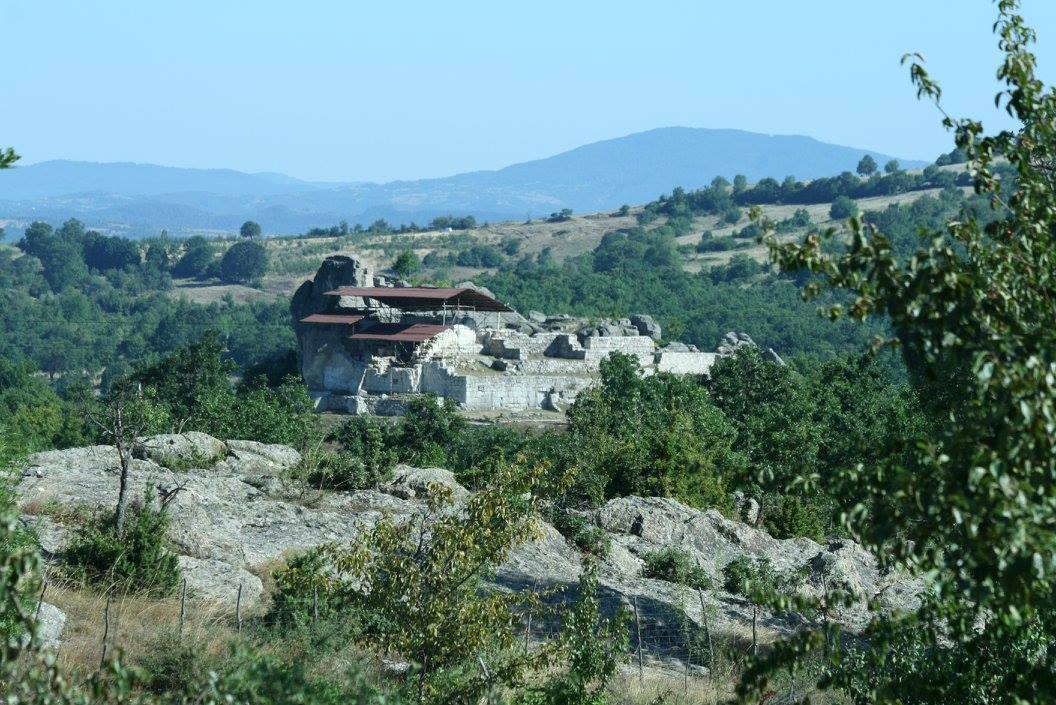
The whole of this region is rich in Thracian settlements and megalithic structures. The landscape is spectacular with large rocky outcrops and canyons everywhere.
In the village of Raven, just down the road from Tatul, back towards Momchilgrad, there is a large rock outcrop next to a small farm where you can clamber to the top and see grooves and furrows carved into the rock and at the base a large collection ‘pond, passkey for processing grapes into wine.
There was much more to see but we unfortunately ran out of time but it is an area we would love to go back and spend more time exploring the numerous sacred Thracian sites.

